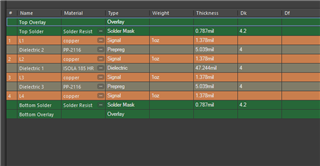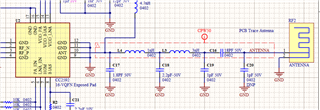Hi team,
I have used CC2530-CC2592 in my design for Smart plug Application and my antenna is not tuned to 2.4GHZ but it is tuned for 1.9 GHZ. I have used AN043 PCb Antenna in my design.Below i have attached layerstackup and SCH design.For CPW50 Reference plane 3 is considered.Kindly Share your thoughts regarding this



